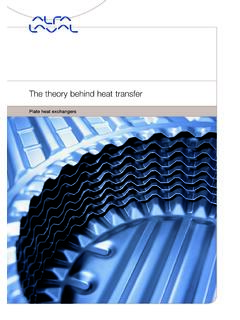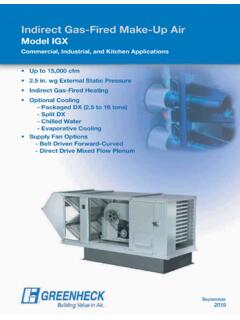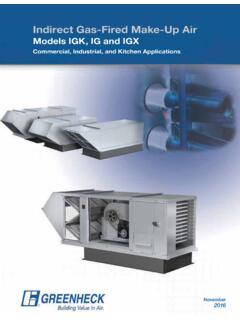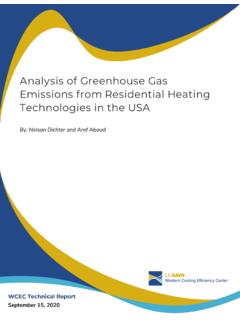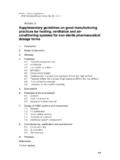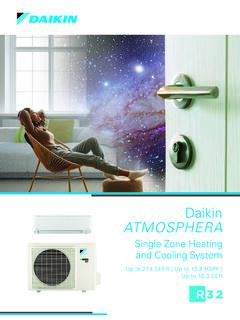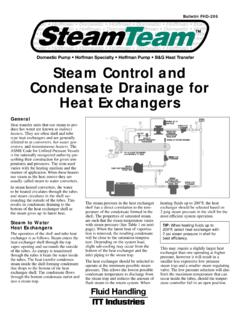Transcription of Jacketed Heating - Chemical Processing
1 2009 JacketedHeatingsponsored byWest Bend,WI or : WashingPick Constant and Variable Flow Heaters deliver accurate temperature control and unlimited hot water to make tank car washing fast, easy and to install, these space-saving systems have proven to be easy to operate and easy to maintain in Chemical plants : Packaged Biokill SystemsPick Biokill Systems effectively deactivate biowaste in a continuous flow-through fully automatic systems use Pick Direct Steam Injection to heat biologically active materials to your precise target temperature (+/-1 C) for effective biokill. All pumps, valves,piping and controls are included in the compact Pick Package. Stainless steel and Sanitary packages are : SystemsPick compact and efficient CIP Systems mount right in-line providing ultra-fast heat up of CIP systems save time, space and energy over inefficient steam sparging and indirect Heating methods. Stainless steel and Sanitary units are available. Get back to production quicker with : Fabricated HeatersPick Custom Fabricated Heaters deliver the same trusted features and benefits of standard models for flows and pressures far above the fact, flow rates of up to 25,000 gallons/minute are will also conform to existing piping, from 1/2 inch to 32 inches in diameter and operations (900 PSIG and above) are : Systems for Jacketed HeatingPick Packaged Systems deliver tempered water at precise and uniform temperature (within 1 C).
2 For Jacketed Heating systems, this provides better process control while cutting costs. No steam traps or expansion tanks are required, and energy costs are cut dramatically as compared with indirect heaters. Simple, efficient, accurate, and easy to : hot water at precisely controlled temperatures is at your hot water is required at any stage in the Processing of your product, and especially if you need it now, we have goodnews: No assembly hassles. Durable and reliable, Pick direct steam injectionpre-packaged hot water systems deliver hot water on demand at your settemperature. Pick is the perfect choice for Chemical industry heat transferapplications ranging from Jacketed vessels, blenders and dryers to CIP, filterbackflushing, biokill and other downstream s more, theyrequire minimal time for installation in either new construction or retrofit situations. Simply connect the packaged unit and you re good to flow. Pre-engineered, assembled and fully tested skids Compact wall- or floor-mounted configurations Pilot scale and full production models available Units include valves, controls and instrumentation to your 3/31/05 10:56 AM Page 1 3 Improve Batch Reactor Temperature Control 4 Understand the likely causes and fixes for common problems in reaching set pointsRethink Reactor Temperature Control 9 Cascade strategy offers simplicity and fast responseKeep Cool When Designing Batch Reactors 11In designing such a unit, focus on effective temperature control to achieve optimum performanceConsider Hot Water for Jacketed Heating 17 Hot water offers significant advantages over traditional steam-heated systemsInnovation in Direct Steam Injection Heaters Since 1945 24Ta Ble of ConTenTS 4 ReaCToR TempeRaTuRe control typically is very important to product quality, production rate and operating costs.
3 With continuous reactors, the usual objectives are to: hold temperature within a certain band a rou nd t he set point, preferably w it hout oscillation; minimize operator intervention; and minimize consumption of reactors generally demand some additional objectives such as: fast heatup or cooldown to a new set point without oscillation and with minimal overshoot; and stable response to load disturbances, , an exother-mic these objectives requires paying attention to many details of the equipment and controller logic. Sys-tematic testing and optimization of the feedback control loops also can speed the startup of a new 1 shows a common control system for glass-lined batch reactors where the slave loop operates on the jacket inlet temperature to protect the lining. The Heating /cooling supply can have various split-range (TY) configu-rations such as control valves to hot/cold headers (which we ll call Case 1), control valves to steam and chilled-water heat exchangers (Case 2) and control valve on the chilled Improve Batch Reactor Temperature ControlUnderstand the likely causes and fixes for common problems in reaching set pointsBy Mark CoughranJacket (Slave)TICOUTC oolingHeatingTYHeating/Cooling fluid supplySP limitsOUTR eactor (Master)
4 SPTTR eactor temperatureJacket inlet temperatureSPPVPVFrom operator or batch recipeSP is the controller set pointPV is the measurement process variableOUT is the controller outputTTTICPV with default PID algorithmSet pointPVs with alternative PID algorithms50403020100 600 1,200 1,800 2,400 3,000 3,600 Reactor temperature, CTime, secReactor temperature, C757065605550454035302510090807060504030 201000 5,000 10,000 15,000 20,000 Time, secReactor set pointTemperature PVUse steamUse chilled waterJacket controller outputJacket controller output, %Add final ingredient60555045403530250 1,000 2,000 3,000 4,000 5,000 6,000 7,000 8,000 Time, secReactor temperature and output, CTemperature set pointController output, CTemperature PVCommon TempeRaTuRe ConTRol STRaTegyFigure 1. Various split-range (TY) configurations can be used to regulate Jacketed glass-lined batch reactors.
5 5 fluid and variable electrical Heating (Case 3). Here, we ll look at some challenges and opportunities based on real data from three such reactors as seen from the operators trend charts. We ll show symptoms of common problems and examples of benefits 1A plant was starting up a new building with all new reactors, instruments and Distrib-uted Control System (DCS). A consultant applied Lambda tuning (which we ll discuss later) to give smooth fast set-point and load responses without oscillation. However, as shown in Figure 2, the default Proportional + Integral + Derivative (PID) algorithm produced temperature overshoot that ex-ceeded the recipe specifications on set-point steps. The overshoot is due to the presence of integral action in both the controller and the process. Dominance of integration (slow ramping) in the reactor temperature process may confuse the engineer, technician or auto-tuner responsible for finding the best controller tuning parameters. Integral action is needed in the controller to correct for load disturbances.
6 In a modern control system it s easy to choose alternative algorithms (Figure 2) to prevent or reduce this we waited longer for the set-point responses to settle, we d see a slow limit cycle of C on the reactor temperature and 5 C on the jacket temperature. The root causes are nonlinearity in the jacket loop from selecting inappropriate control valves and excessive dead zones in the split range strategy. No tuning of the feedback control-ler will eliminate limit 2At another plant, temperatures of eight reactors were oscillating. Figure 3 shows a Jacket (Slave)TICOUTC oolingHeatingTYHeating/Cooling fluid supplySP limitsOUTR eactor (Master)SPTTR eactor temperatureJacket inlet temperatureSPPVPVFrom operator or batch recipeSP is the controller set pointPV is the measurement process variableOUT is the controller outputTTTICPV with default PID algorithmSet pointPVs with alternative PID algorithms50403020100 600 1,200 1,800 2,400 3,000 3,600 Reactor temperature, CTime, secReactor temperature, C757065605550454035302510090807060504030 201000 5,000 10,000 15,000 20,000 Time, secReactor set pointTemperature PVUse steamUse chilled waterJacket controller outputJacket controller output, %Add final ingredient60555045403530250 1,000 2,000 3,000 4,000 5,000 6,000 7,000 8,000 Time, secReactor temperature and output, CTemperature set pointController output, CTemperature PVCaSe 1 Figure 2.
7 Overshoot afflicted set-point steps on an 800-L reactor with the reactor loop in auto and the jacket loop in cascade. Jacket (Slave)TICOUTC oolingHeatingTYHeating/Cooling fluid supplySP limitsOUTR eactor (Master)SPTTR eactor temperatureJacket inlet temperatureSPPVPVFrom operator or batch recipeSP is the controller set pointPV is the measurement process variableOUT is the controller outputTTTICPV with default PID algorithmSet pointPVs with alternative PID algorithms50403020100 600 1,200 1,800 2,400 3,000 3,600 Reactor temperature, CTime, secReactor temperature, C757065605550454035302510090807060504030 201000 5,000 10,000 15,000 20,000 Time, secReactor set pointTemperature PVUse steamUse chilled waterJacket controller outputJacket controller output, %Add final ingredient60555045403530250 1,000 2,000 3,000 4,000 5,000 6,000 7,000 8,000 Time, secReactor temperature and output, CTemperature set pointController output, CTemperature PVCaSe 2 Figure 3.
8 Oscillation occurred during set-point step on a 40,000-L reactor with the reactor loop in auto and the jacket loop in cascade; a load disturbance (exothermic reaction) also took place. 6 set-point response and a load response for one reactor temperature loop. With the reactor set point initially at 30 C, the slow oscillation caused the jacket to continuously and alternately consume significant quanti-ties of steam and chilled water. Later, after the exothermic reaction, the jacket control-ler output began swinging almost full scale up and down. Average energy consumption was much greater than that theoretically re-quired to maintain the reactor temperature. There also was a smaller faster oscillation of the jacket main problems identified by the consultant and corrected were: oscillatory tuning of the reactor tempera-ture controller; oscillatory tuning of the jacket tempera-ture controller; excessive dead zone in the jacket split range logic; and control valve setup plant personnel hadn t been trained in modern loop-tuning methods such as Lambda tuning, which gives nonoscilla-tory response at the speed required by the production objectives.
9 The tests required for systematic tuning also revealed the nonlin-earities in the split range logic and control valves. After applying corrections to three reactors, energy savings on steam alone paid for the consulting project in less than three months. CaSe 3 The as-found auto response was too slow, tak-ing more than two hours to reach the new set point (Figure 4). Note for the reactor (master) loop the units of the SP, PV and output all are C. For integrating processes, fast closed-loop response requires driving the output beyond the PV for some period of time. Due Jacket (Slave)TICOUTC oolingHeatingTYHeating/Cooling fluid supplySP limitsOUTR eactor (Master)SPTTR eactor temperatureJacket inlet temperatureSPPVPVFrom operator or batch recipeSP is the controller set pointPV is the measurement process variableOUT is the controller outputTTTICPV with default PID algorithmSet pointPVs with alternative PID algorithms50403020100 600 1,200 1,800 2,400 3,000 3,600 Reactor temperature, CTime, secReactor temperature, C757065605550454035302510090807060504030 201000 5,000 10,000 15,000 20,000 Time, secReactor set pointTemperature PVUse steamUse chilled waterJacket controller outputJacket controller output, %Add final ingredient60555045403530250 1,000 2,000 3,000 4,000 5,000 6,000 7,000 8,000 Time, secReactor temperature and output, CTemperature set pointController output, CTemperature PVCaSe 3 Figure 4.
10 Response was far too slow for a set-point step on a 3,600-L reactor with the reactor loop in auto and the jacket loop in ,550 2,050 2,550 3,050 Time, secController ouput, %Jacket set pointJacket temperature PVUse heaterUse chilled fluidJacket temperature, CJacket controller output, %aSymmeTRICal ReSponSeFigure 5. Jacket responded faster to cooling than Heating as shown with reactor loop in manual and jacket loop in cascade mode. 7 to the slow tuning, the operators preferred to make frequent manual adjustments to the jacket set point until the correct reactor temperature was achieved. This interfered with the operators primary duties such as sampling for quality to nonlinearities in the control logic, it wasn t possible to find the best controller tuning parameters by hand calculation. Instead the consultant built a computer simulation using test data acquired from manual step responses.

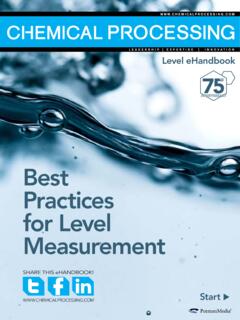

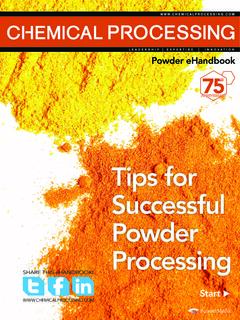
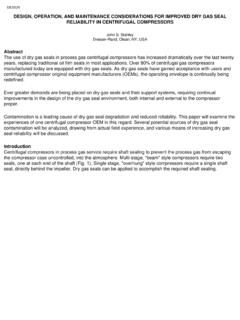
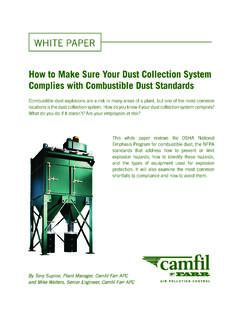
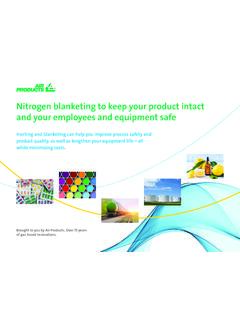
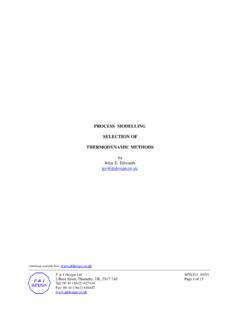
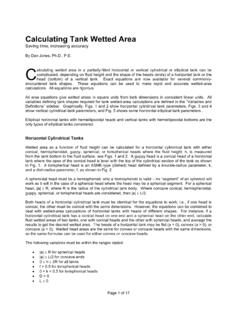
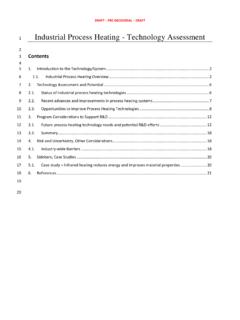
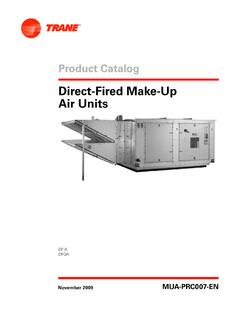
![CO2 O HFCs PFCs SF Figure [1.1] Overview of GHG Protocol ...](/cache/preview/3/d/2/1/2/3/d/4/thumb-3d2123d4267e2c91399051a67e77df13.jpg)
